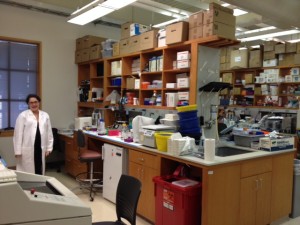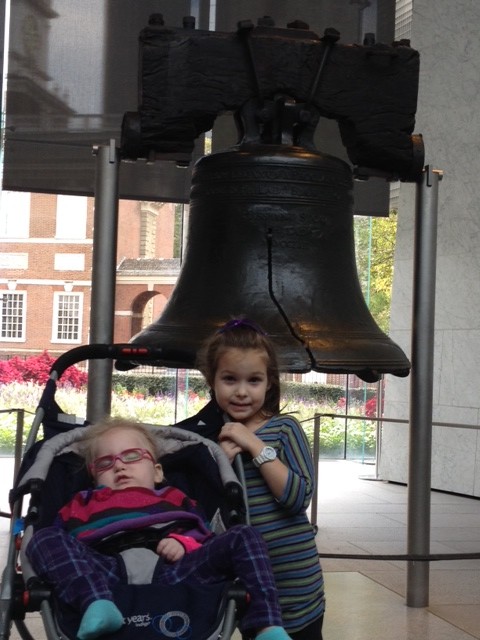Where the ‘Land of the Free’ was created
Last week our family took a trip to Philadelphia to meet with Dr. Francis Jensen, Professor and Chair of the Department of Neurology at the University of Pennsylvania. Three years ago we first met Dr. Jensen in Boston to find out why Harper was having seizures that medication was not controlling.


Sadly, after labs from that first visit came back, Dr. Jensen had to give us the news of Harper’s devastating diagnosis: CDKL5 Disorder. Thankfully, Dr. Jensen is a patient-driven researcher. When we reached out to her later in July 2011 regarding patterns seen in Harper’s seizures and others with CDKL5, she agreed to help!
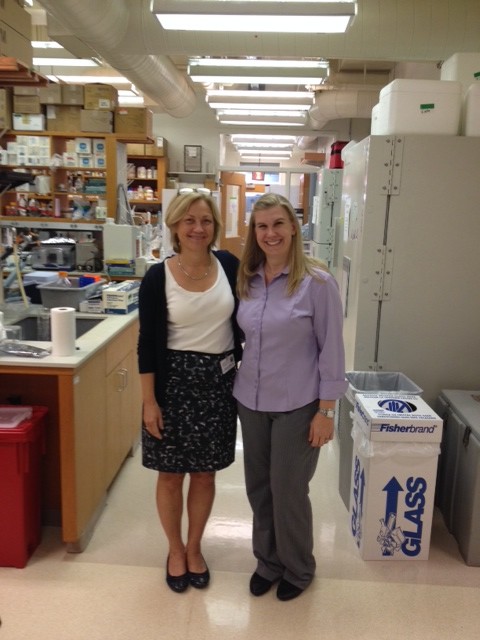
Freedom from seizures: it takes the whole team
In our visit last week we met with Dr. Jensen and her clinical research team: Dr. Jocelyn Lippman-Bell, Dr. Delia Talos, and Dr. Hongyu Sun. There was a lot to learn about and see concerning the Hope4Harper Seizure Research project.
Dr. Hongyu Sun,
electrophysicist, is looking at targeting increases in
brain plasticity so that a brain can be stronger to resist the seizure activity. They are currently looking at this in relation to the
drug Rapamycin. They have broken down its compounds and are testing each one to see which individual compound of the drug is responsible for suppressing the excitability of the brain. They are looking to strengthen the brains ability to inhibit seizures while lessening the side effects of suppressing excitability so as not to sedate the user.
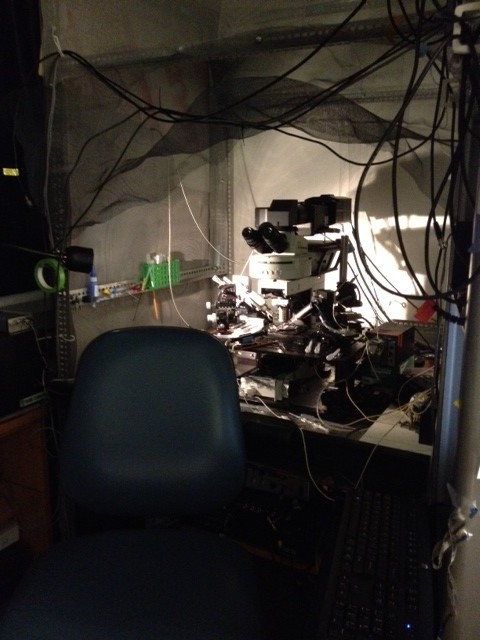
Dr. Coulter’s state-of-the-art lab equipment
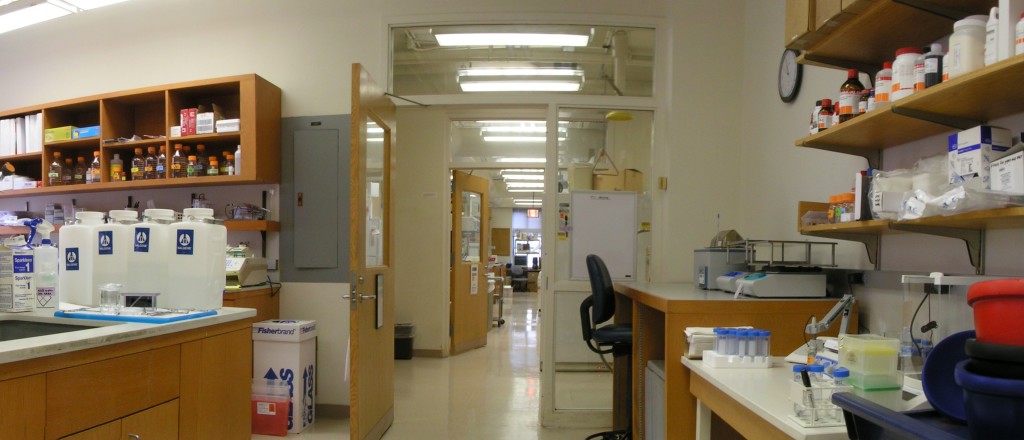
Dr. Zhou’s Lab
The freedom to speak, and the joy of being heard!
Lastly, I was able to meet with
Dr. Xilma Ortiz-Gonzalez, Attending Child Neurologist, Pediatric Neurogenetics Program, Division of Neurology; and Center for Mitochondrial and Epigenomic Medicine. In other words, this is the doctor we were able to discuss
our metabolic theory with and she
is willing to collaborate her efforts to see what is or is not there metabolically relative to CDKL5.
Hope4Harper’s efforts to stop seizures for those with CDKL5 will impact a broader group of those with Epilepsy. In 40% of those with Epilepsy, current anti-epileptic drugs do not work to control their seizures. In this project we are working directly with mouse model brain splices to logically weed through medications already on the market to treat other disorders to see if they have properties that may control seizures.
According to Dr. Zhou, a knock-out mouse model of CDKL5 (the CDKL5 gene is disrupted in the mouse’s DNA) has been developed. Surprisingly, the knock-out mouse model in their tested genetic background does not develop seizure phenotype. Currently, Dr. Zhou and his colleagues are testing the knock-out mouse model in different settings.

Patients, leading physicians
During this visit we were able to observe what we had hoped: the research project really is committed to being a
collaborative effort, which to me is fantastic because that is the fastest way to a solution
! The idea of collaboration is Dr. Jensen’s firm belief as well, which is what sparked
Vision 20/20 during her term as President of the American Epilepsy Society! Groups of patients are best at leading researchers in a direction to reach a solution faster because we know best what is going on with our children… we simply don’t know how to put all the information into a useful form in order to yield a solution.
The freedom to consider every possibility
In my recent visit I did speak with Dr. Jensen briefly regarding
CBDs as resource for possible seizure control. She is interested to see if cognitive and/or physical improvement occurs within the next few months for Harper. Her concern is that with prolonged use there is the possibility of decreased brain function.
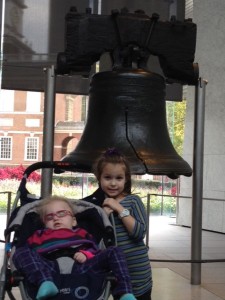
“OK Lily, who broke it?” at the Liberty Bell
I found it surreal to be standing where the land of the free was created… as we stand with many who fight for freedom from seizures. I’m confident that this is where answers of freedom will be found.

Dustin, Lily and Harper at Independence Hall




